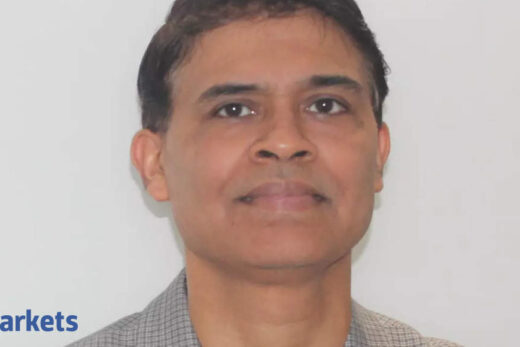How have your conversations been with your top notch HNI clients lately?
A lot of professional investors and HNIs and family offices who have been active in the market in last 12 to 18 months have made reasonable amount of gains and the focus has been on midcaps and smallcaps at least in the last six to nine months where broader market participation is beginning to catch up.
There was a long phase in India, where only the largecaps and mega caps were doing fairly well. Overall broader market was under serious correction but in the last six to eight months, not only were bottoms made in NSE 500 and BSE 500 and so on, but these stocks are also beginning to participate fairly aggressively in the market. Though Nifty has broken all-time highs, the NSE 500 is still 5-7% away from it’s all-time high and the trajectory is in upward direction. Now why is that happening? If you look at the economic scenario which is playing out, the smallcaps and the midcaps went through a lot of pain. The smaller companies could not take on the headwinds of our economic slowdown which was either Covid led or even prior to that policy led, where the nominal GDP growth rate had creeped downward for many years.
Plus there were alot of policy actions — IBC and so on coming in as well as stress on the banking books. A very large deleveraging of balance sheets has happened. If one actually goes through the numbers in some details, that to EBITDA ratios have actually become extremely favourable. EBITDA margins and EBITDA has expanded in the last few quarters for a broader sense of universe and at the same time, debt has been coming down over the last two-three years.
Large sections of Indian industry are now poised for a capex growth as the balance sheet stands deleveraged and demand visibility is beginning to play. The focus of the government appears to be towards growth now which is a very big change in the trend from the pre-Covid and pre-China faceoff period.
Two factors which played out very clearly to our mind and the change in the government thought was the slowdown that India saw because of Covid shutdown. There was a massive fall in GST collections and tax collections got hit badly. This year, the government will have to give around Rs 3.5 lakh crore to the state governments kitty to make up for the GST shortfall. The second thing was the standoff with China on the Himalyan Border. Both these things caused a serious rethink in the government and the government is now fully inclined towards a higher nominal GDP growth, higher tax collection revenues and so on. The broader economy should do very well and mid and smallcaps are in the best position to play this catch up and will provide benefits to long-term investments.
While you are researching companies, are you seeing improved balance sheets? Are they much more confident of recovery? How have they navigated in the last six months or one year or even the last one and a half years?
The sense we are getting is fairly positive. Let us just break it up into two parts; there are some sections of industries which are very big beneficiaries of the entire value migration trend which is happening out of China. So whether it is or some sections of the manufacturing industries, we clearly see value migrating from China to India where not only is there a strong, robust domestic demand playing out but even the global players are coming in and asking for Indian goods and services. That is one segment where we clearly see companies looking at undertaking capital expenditure to expand their capacities.
The second segment which is gaining favour at this point is the PLI segment where the government is focussed. The production linked incentive scheme has huge ramifications for India. The kind of numbers that the government has declared under various sectors’ PLIs, if they fructify over the next three, four, five years will cause a significant shift in the manufacturing base of the country. The absolute numbers could be lakhs of crores,
I am talking about the top lines given the schemes in excess of Rs 2 lakh crore have already been announced. Again, those sectors and those companies which are participating are talking of a significant capex which would be undertaken and then there is going to be a fall through effect, the next level and the next level where the ancillary providers would undertake capex. That is one game which is clearly playing out. Secondly, there is a huge investment cycle which is waiting to come in. In the last few years, given what the trend was, given what the risk perception was, Indian average household savings has gone up significantly. People have not carried out large amounts of investment expenditure and household investment is a large part of the overall investment expenditure in India. Household investments, especially in the homes where people have been on the back foot predominantly because of the problems on the sectoral side and the home prices going nowhere.
So if the Indian household investment begins to come into the market, it will create a huge demand for multiple sectors, not only on the housing side but even the second level derivative industries and so on. The balance sheets have lightened up and companies are in a position to undertake significant capital expenditure over the next two, three, four years, interest rates are very, very low and there is foreseeable demand on the horizon. All these factors are playing fairly positive and a lot of investors are getting aligned to these things.
So if you are playing that theme of capex revival, what kind of names would you go for? Would you go with companies which are feeder industries into capex or automation companies or auto ancillaries?
We have two clear favourites at this point — auto and real estate and predominantly auto. If we look at the CV cycle, three-four years ago, when the government suddenly expanded the axle load capacity and GST came in, it led to a lot of simplification of logistics for the company. Now these two factors played opposite each other. While axle load hampered the demand for CVs because the same truck would carry a lot more load now and the logistics simplification took a long time to fructify. Now some of those initiatives are beginning to bear fruit and we are seeing Covid play spoilsport. With the economic shutdown, trucking industry, which is the predominant movers of goods in the country, went on the back foot.
All these factors led to CV demand being fairly benign. We see that trend reversing very aggressively. Our sense is that over the next two to three years, we could see compounding at the rate of 30-35% as far as the CV segment is concerned, significantly driven by the replacement demand as well as the fresh new demand as the overall economic activity picks up. So that is one area which we like very much.
The second area we like is the real estate side. It is a kind of contra bet. It is not that real estate stocks for the companies would start going through the roof in the next three-four months or couple of quarters. It is a story which will play out over the next two to three years. It is a fairly interesting one from our point of view because at some level it is a contra call. In the last seven-eight years or nine years, real estate prices have gone nowhere. The demand for houses has been on the downward trajectory, especially if you look at the large seven cities in India. The volumes have been fairly benign.
At the same time, the salary growth for a lot of people has been compounding at 6-7-8-9% which means the salaries would have doubled from the base for a large part of the population of the country while the prices of homes have stayed where they are. Another big factor which has played out is very low interest rates. Interest rates are at multi-year low now which means along with the increased income and low interest rates, the purchasing power has gone up very significantly as far as the demand side is concerned.
If we were to look at the supply scenario, because of RERA there was a huge amount of consolidation. Every nook and corner builder has gone out of business while some large players have remained in each city. Most of those players are becoming national players. Real estate has always been a very localised company. DLF, which came to Mumbai 10-15 years ago, eventually had to sell the lands that it acquired at a loss. Now all that is changing. The real estate players are becoming national players. So, there is Brigade in Bengaluru, which is now considering going to Pune. Godrej is already present in Mumbai, Delhi, Pune and Bengaluru. So real estate players are going national. On one hand, smaller companies are going out and the bigger ones with much better balance sheets and delivery capabilities are coming in.
The brands are getting established. Now when you match both these things up on the supply and demand side, we see it as a structural trend. We see that listed large players would generate a significant amount of wealth for their investors over the next three-four-five years and that is what we are advising our clients.



